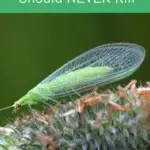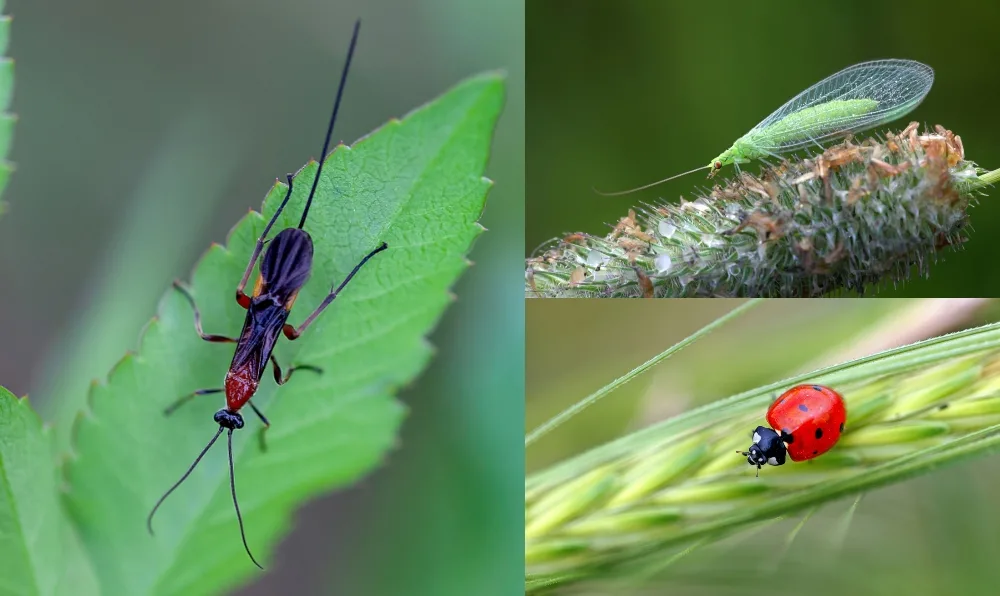
For many of us, the sight of a creepy-crawly bug in our beautiful garden stirs an age-old instinct – SQUASH IT.
But wait!
Before you pulverize that little critter, take a second look. Many of the insects inhabiting your garden are there because it’s a veritable buffet of their favorite food – other bugs. And often, these insects are eating the ones destroying your garden.
By allowing, or even purposefully adding helpful bugs to your garden, you’re letting nature take some of the work out of keeping your garden pest-free.
And utilizing these little guys can be preferable, and often more effective than using a pesticide.
Pesticides don’t discriminate and end up destroying all the bugs – good or bad. As all insect populations are on the decline due to climate change, we need to be more thoughtful about the way we deal with pests in our backyards. We can start by shelving pesticides and letting the bugs do the work for us.
Let me introduce you to a few garden-friendly bug allies.
You can even purchase some of these helpful insects and add them to your garden. It’s kind of weird to think about, right? “Honey, do you know if my order of lady beetles came in today’s mail?
1. Aphid Midges
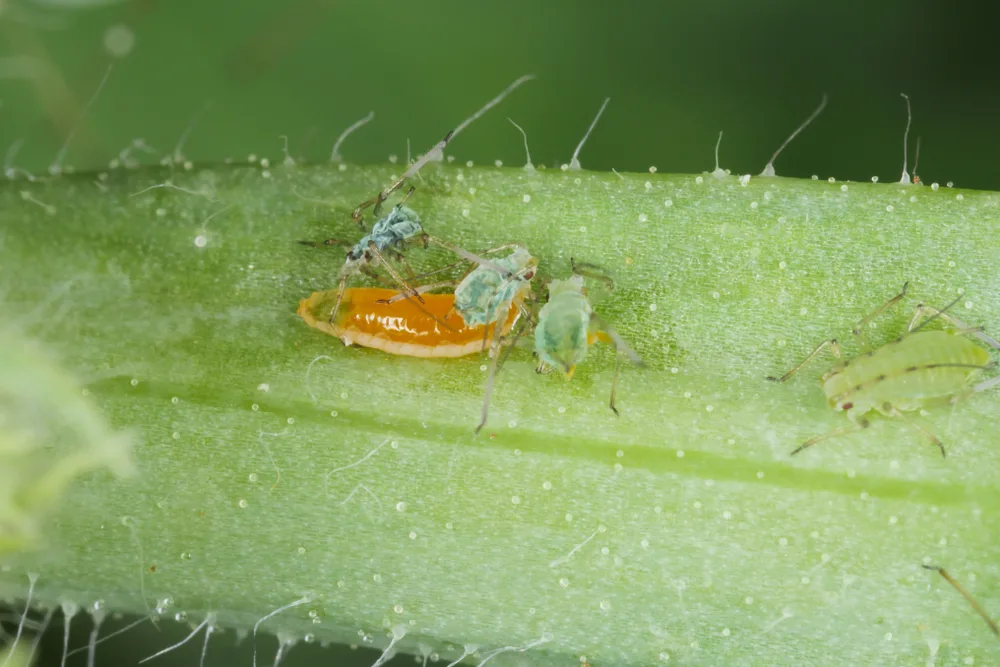
The Aphid midge, a member of the Cecidomyiid family, loves to snack on over 60 different types of aphids. And the best part is, if you have an aphid problem, the midges are probably already on their way. Aphids make ‘honeydew’ which attracts aphid midges.
Keep an eye out for tiny orange eggs under the leaves of your plants, which will turn into fat little orange larvae. The larvae are what eat aphids, and they eat a lot!
Aphid midge larvae will happily chow down on around 50+ aphids a day, and they’ll keep eating for up to a week.
Once they’ve eaten enough, the larvae drop off of the plants and burrow into the soil. Here they will turn into adult midges who will start the whole process over again.
2. Braconid Wasps
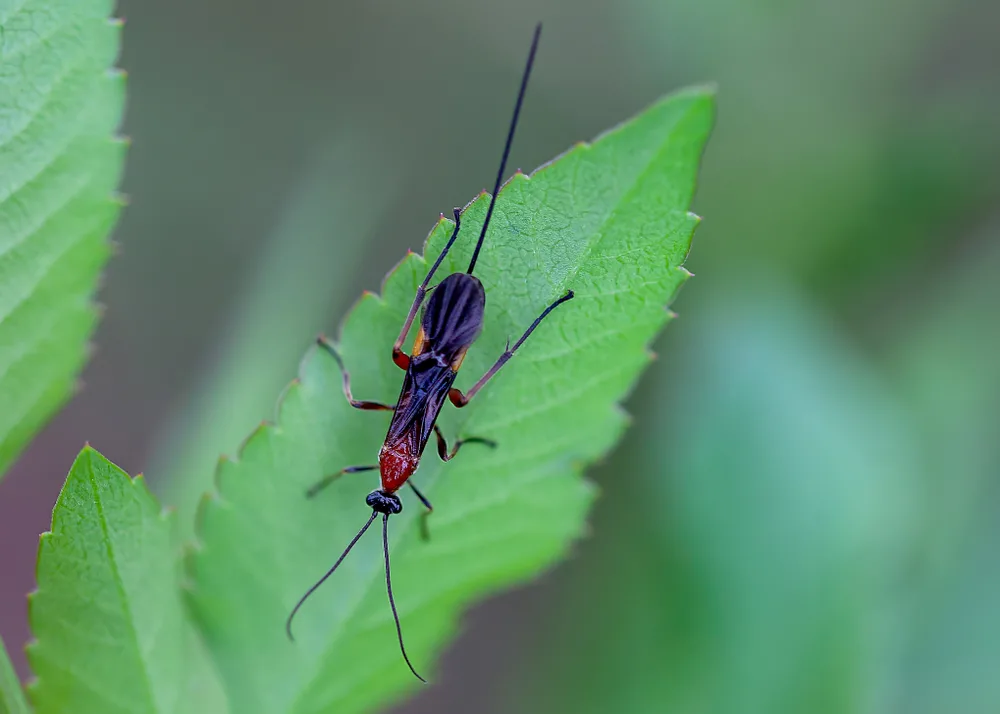
If there is one thing that strikes fear in the hearts of tomato growers everywhere, it’s finding a Hornworm on your beloved tomato plants.
These giant caterpillars epitomize Eric Carle’s “The Very Hungry Caterpillar,” with their voracious appetites. And it only takes a few Hornworms to wipe out your entire tomato crop.
Enter the braconid wasp from the Hymenoptera family (think wasps, bees, and ants).
The braconid wasp is nature’s brutal answer to the giant, lumbering Hornworm. These slender and delicate looking wasps are parasitoids. This means the larvae of the wasp live off of a host insect, and the host inevitably dies.
These tiny, slender wasps have spindly legs and an orange body with black wings. They have a long stinger but don’t worry, that’s for the Hornworm, not you. Braconid wasps do not sting.
The female wasp lays her eggs inside the Hornworm caterpillar. The larvae eventually emerge from the caterpillar to feed. Then they spin tiny white cocoons on the body of the caterpillar where they will pupate into an adult wasp all while killing the host Hornworm.
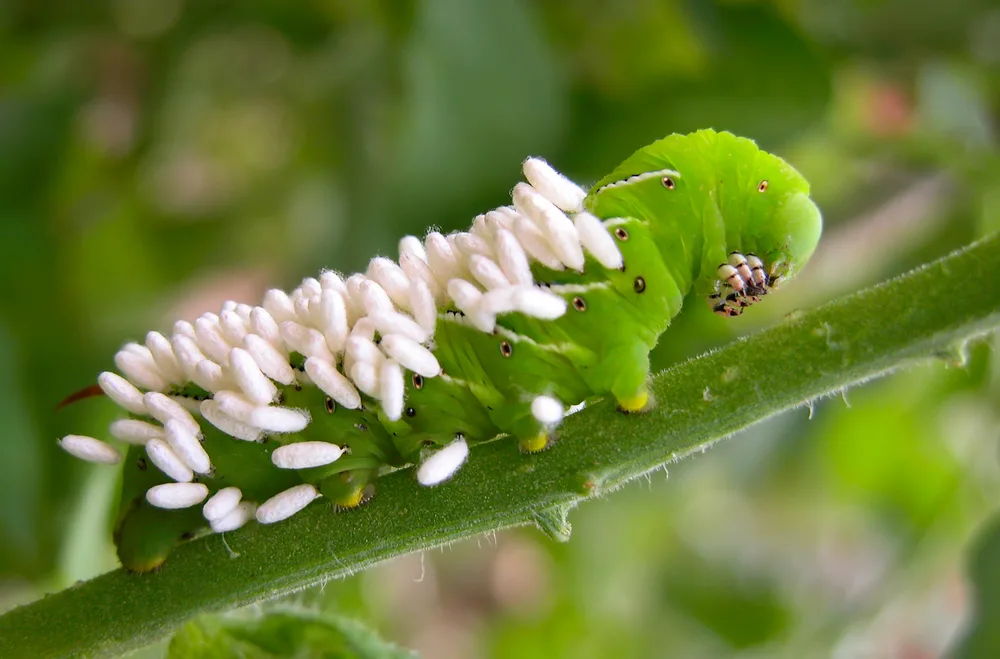
See? Brutal.
3. Damsel Bugs
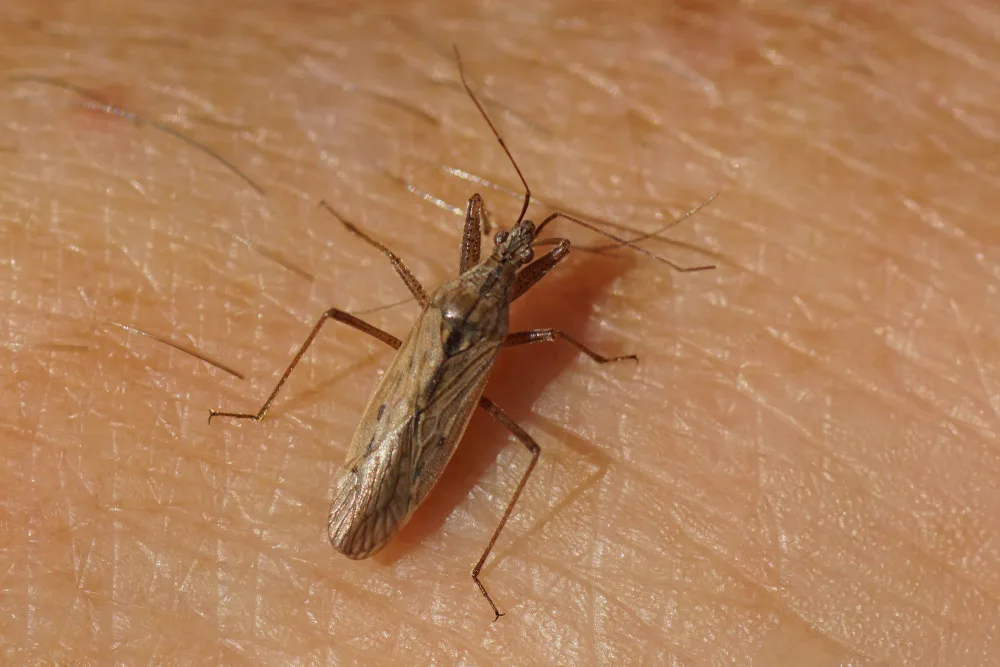
Damsel bugs are from the Nabidae family of insects. They sound dainty, don’t they? Damsel bugs got their name because of the way they hold their front legs up in the air- as if holding up the hem of a skirt. (Yeah, I don’t know. I thought it was a stretch too.) They range from green to tan to brown and have veined wings over their backs.
I’ll spare you the gory details, but remember those cute front legs that are supposedly holding up a skirt? Nope, those legs grasp and hold prey.
The good news is their prey are common garden pests such as insect eggs, aphids, mites, and even small caterpillars.
Damsel bugs are what’s known as a “generalist predator,” which basically means they aren’t picky eaters. Damsel bugs will also eat other predatorial insects such as the minute pirate bug or assassin bugs. And if the prey is scarce, they will eat each other.
While you can’t buy Damsel bugs, you can encourage them to hang out in your garden. Discontinue the use of pesticides and provide a diverse variety of plants to entice them to hang around.
4. Ground Beetles
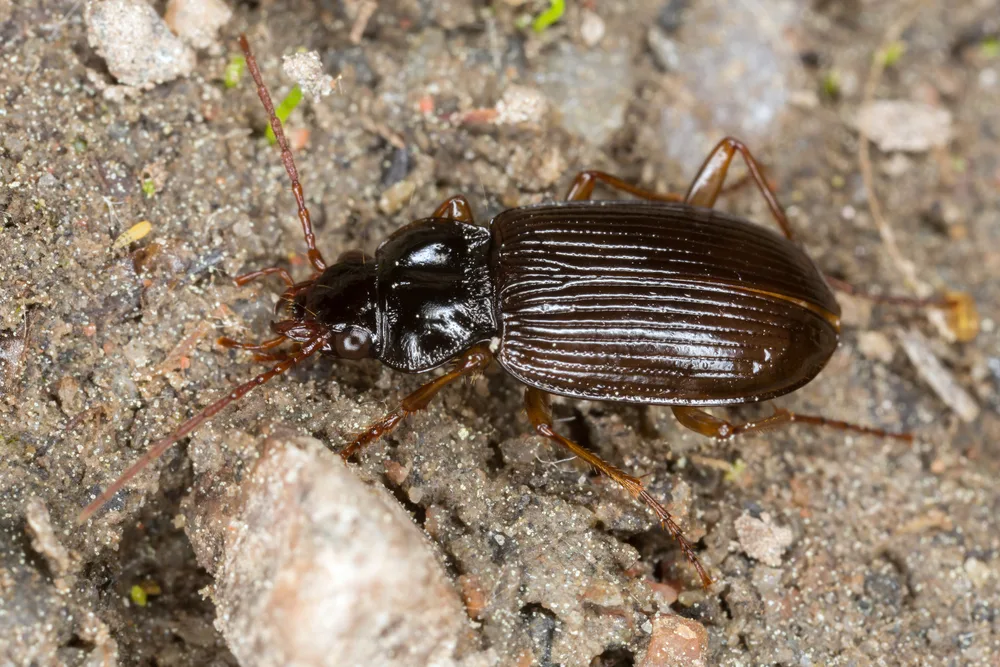
I’ll bet you’ve seen ground beetles all over your garden in the past but did you realize what a good little bug it is?
They tend to be either black or brown and anywhere from 1/8” to 1 ½” long. Often you’ll find them when you move a rock where they’ve been hiding for the day. These guys do double duty eating pests above ground and below too.
Ground beetles are a part of the Carabid family and usually live for about four years, spending winter underground.
As larvae, they live beneath the soil, eating many common underground garden pests. Above ground, these beetles eat nearly all other bugs – caterpillars, slugs, maggots, and other insect pests. Some ground beetles even eat the seeds of certain weeds, such as thistle, foxtail, and ragweed.
Who wouldn’t want this hard-working insect in their garden?
To encourage ground beetles to hang out in your garden, provide them with a place to stay during the day, as they’re nocturnal. A log or a few large flat rocks is an excellent place to start.
Give ground beetles a few perennial plants that offer shade and a place to hide, and you’ll have happy little garden helpers.
5. Hoverflies
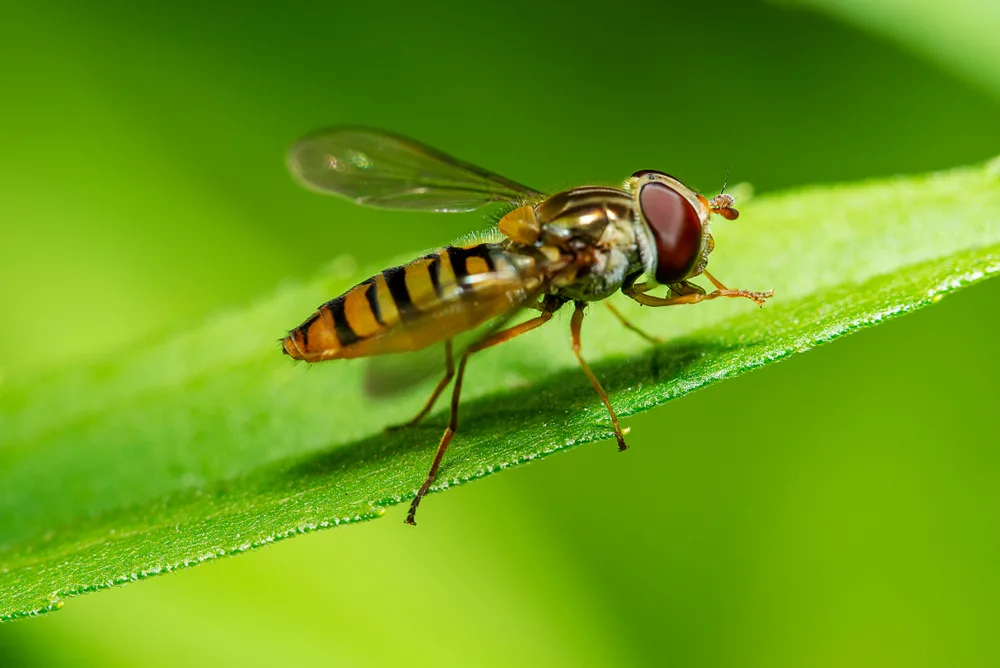
Hoverflies belong to the Syrphidae family. Due to their coloring and patterns, these flies are often mistaken for some type of bee or wasp. Don’t worry; they don’t bite.
They get their name from their ability to hover in the air. Think of them as the drones of the fly world.
Aphids don’t stand a chance when you’ve got hoverflies hanging around the garden. Aphid honeydew naturally attracts hoverflies. If you’ve got an aphid problem, it’s likely that help is on the way, so keep an eye out for these zippy little flies.
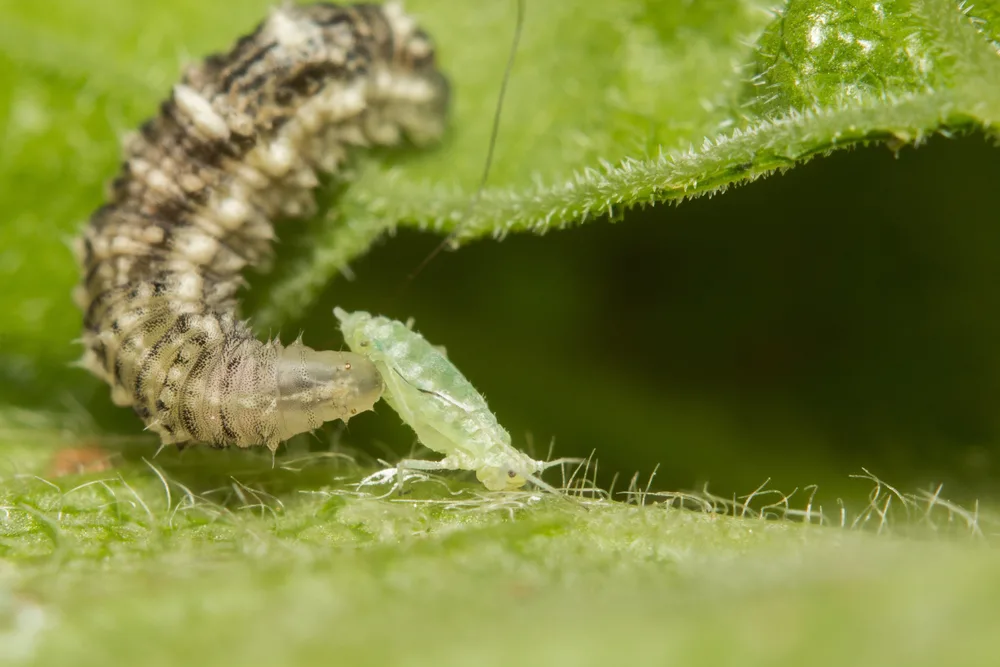
The larvae look a bit like tiny green sea cucumbers, and they’re the ones doing all of the eating. And not just aphids, they’ll sometimes eat small caterpillars and thrips as well. As adults, hoverflies become minor pollinators making them a welcome addition to any garden.
6. Lacewings
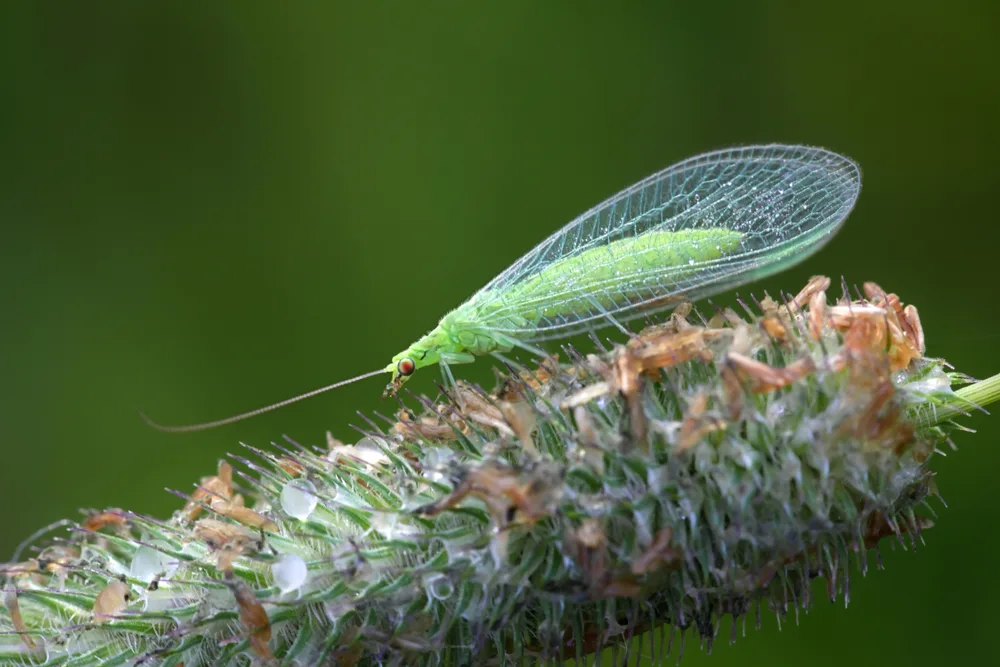
The Green Lacewing is another example of a generalist predator – not a picky eater.
These little insects are slight and delicate, with slender green bodies, long antennae, and nearly see-through wings. Like many of the bugs on our list, they’re just waiting on their next meal to reveal their true nature – a predator.
The eggs of the green lacewing are uncommonly beautiful. Each egg sits on the end of a tiny stalk, the mere thickness of a silk thread.
Once hatched, the larvae are hungry little buggers. While their favorite foods are aphids, they’ll eat just about any soft-bodied insect, including mealybugs, leafhoppers, and even small caterpillars.
As adults, lacewings become beneficial pollinators feeding on aphid honeydew and the nectar and pollen of plants.
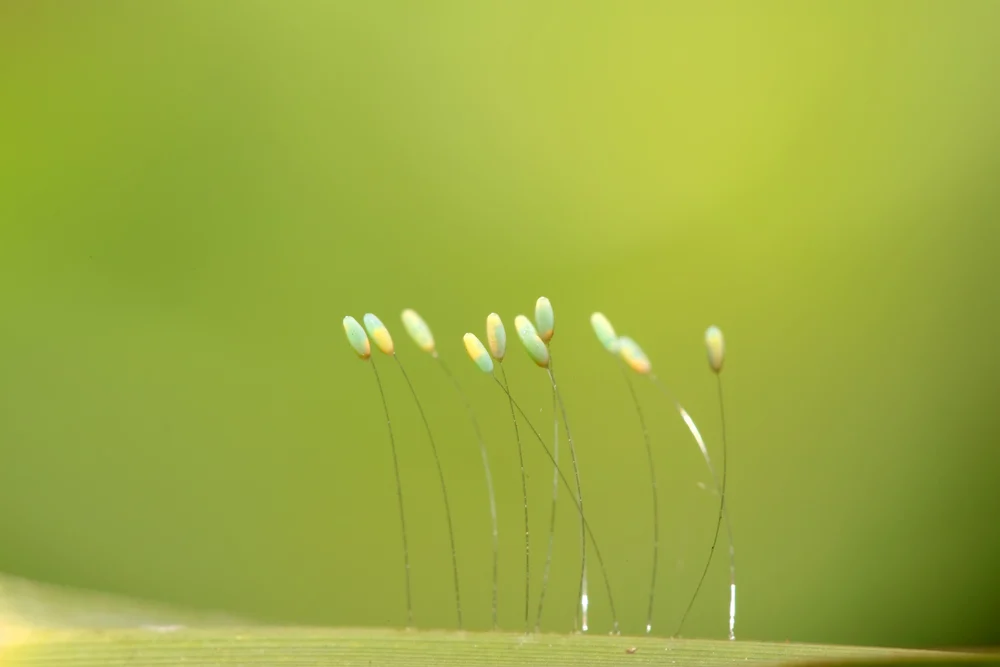
Again, the best way to encourage these helpful bugs to show up is by putting away the pesticides. If you like, you can even purchase lacewing larvae to populate your garden.
7. Lady Beetles
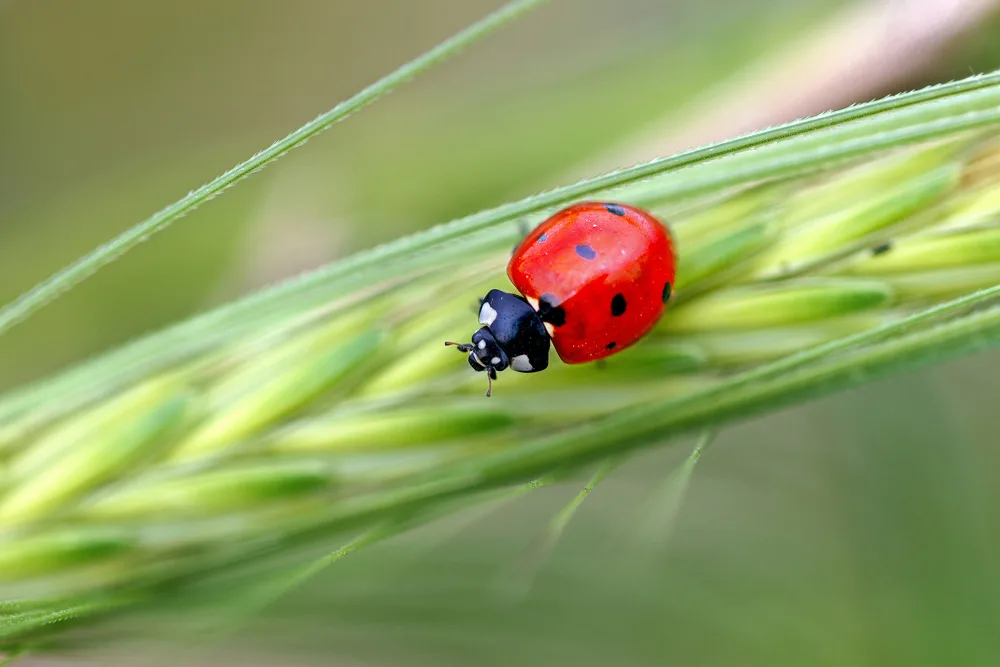
Whether you call them ladybugs, ladybird beetles or lady beetles, these shiny-shelled critters are well known for being a beneficial insect. And you’ll be hard-pressed to find a cuter bug in your garden.
Another aphid-eater, ladybugs, can really pack away the pests. It’s been estimated that one ladybug can eat around 5,000 aphids throughout its life.
And they don’t stop with aphids; ladybugs eat mites, insect eggs, and scale insects too.
Again, this is another bug where the hungry larvae do most of the pest-eating. But you may be surprised to learn that the larvae look nothing like the cute adult beetle.
This truly is a case of Beauty and the Beast as ladybug larvae look a bit like teeny creepy alligators. They have elongated, spiny bodies, and are black with splotches of orange on either side—another reason to be careful what you squish in your garden.
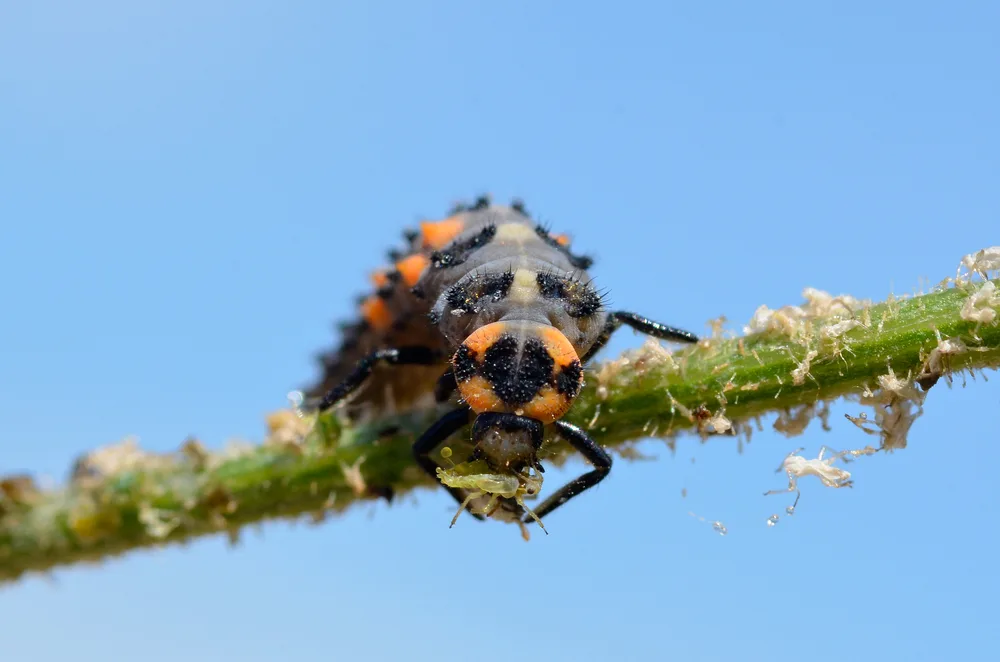
To attract ladybugs provide them with their favorite non-insect food – pollen.
Ladybugs are specifically attracted to marigolds (a great plant for your garden), calendula (which you should be growing anyway), yarrow, cosmos, and herbs such as dill, cilantro, and chives (another excellent choice to grow).
And if that doesn’t work, you can always order ladybugs online to release in your garden.
A note on Asian ladybugs
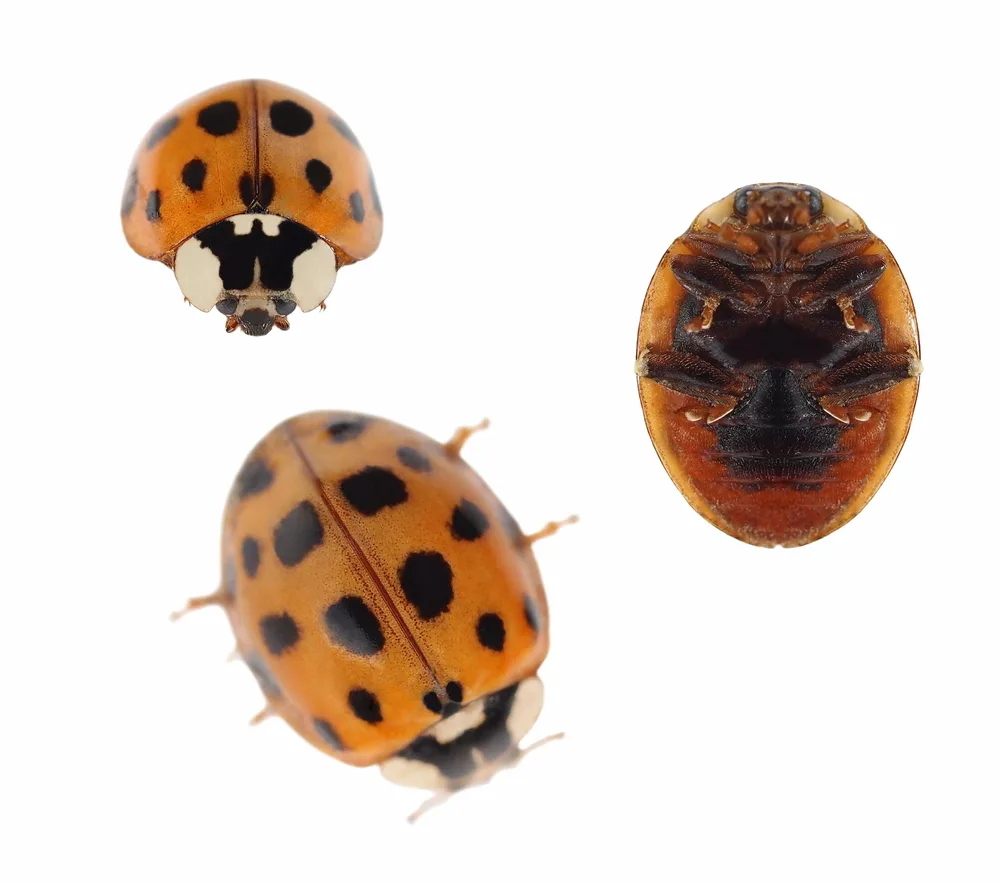
Asian lady beetles have become a real problem in the last decade, often crowding out native species. I’ve spent more than my fair share of time vacuuming up these guys in my home when the weather turns cold. And while native lady beetles are harmless, the Asian lady beetle will sometimes bite and can cause quite a stink if disturbed.
An easy way to distinguish Asian lady beetles from native ladybug species is by the tiny markings on their heads. Asian lady beetles have a small ‘M’ shape at the base of their necks, while true lady beetles do not. Also, Asian ladybugs tend to be orange rather than red.
8. Mealybug Destroyer
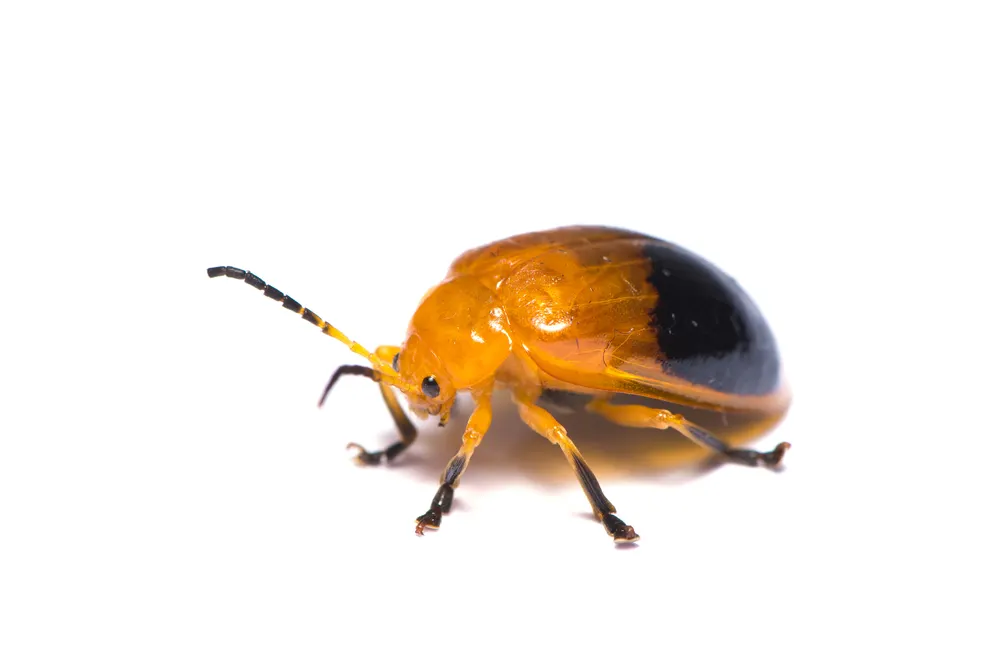
You’ve got to appreciate a bug’s pest-control capabilities when it’s named after the very pest it eats.
Hailing from the Coccinellidae family, these guys are a cousin to the lady beetle, only without the fancy paint job. They’re dark brown or black with an orange head and backside.
As larvae, the mealybug destroyer is a wolf in sheep’s clothing. They look a bit like mealybug larvae due to a white curly covering on their bodies. However, you can quickly tell them apart from actual mealybugs by their larger size. And to further aid in the destruction of a mealybug infestation, mealybug destroyer females will lay their eggs right in the middle of their prey’s egg sacks.
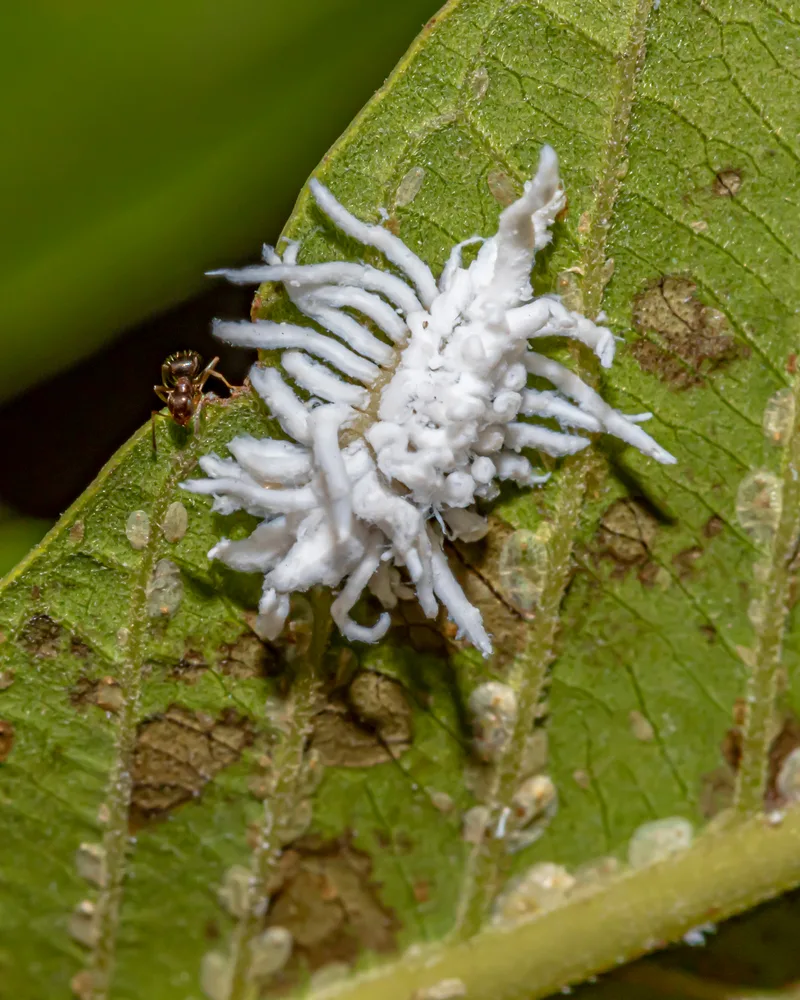
Both the larvae and the adult beetle eat their preferred prey. A single mealybug destroyer can eat hundreds of mealybugs during its life. Because they eat both the eggs and the larvae of mealybugs, I think you’ll agree that the mealybug destroyer was aptly named.
You can also order these beetles to release in your garden if mealybugs are a specific problem for you.
9. Minute Pirate Bugs
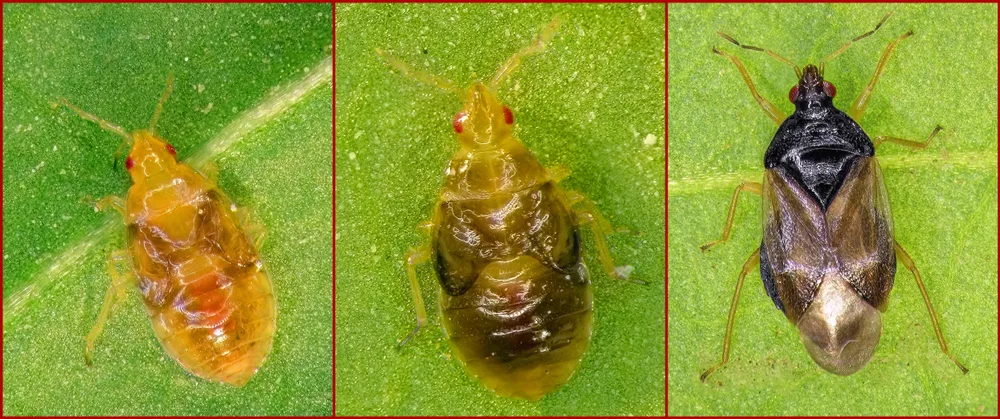
Yarrr! The minute pirate bug or Orius bugs are one of the few insects on our list that just might take a bite out of you.
While these generalist predators are happiest chowing down on thrips, mites, insect eggs, leafhoppers, corn borers, and other soft-bodied insects, they’ve been known to bite humans too. Typically, they aren’t aggressive and will leave you alone if you leave them alone.
This is another bug that will eat other insects throughout its life cycle. Minute pirate nymphs are tiny and teardrop-shaped and orange. They begin to elongate and turn brown as they mature. The adult minute pirate bug is dark brown or black with black and white wings folded over its back.
Oddly enough, they are also known as flower bugs, which paints quite a different picture than pirate bugs.
These bugs are usually one of the first beneficial bugs to show up on the scene each spring. You can find them where their prey like to hide. So, if you grow strawberries, corn, beans, tomatoes, or potatoes, keep your eyes peeled for this hungry little bug, matey!
10. Spiders
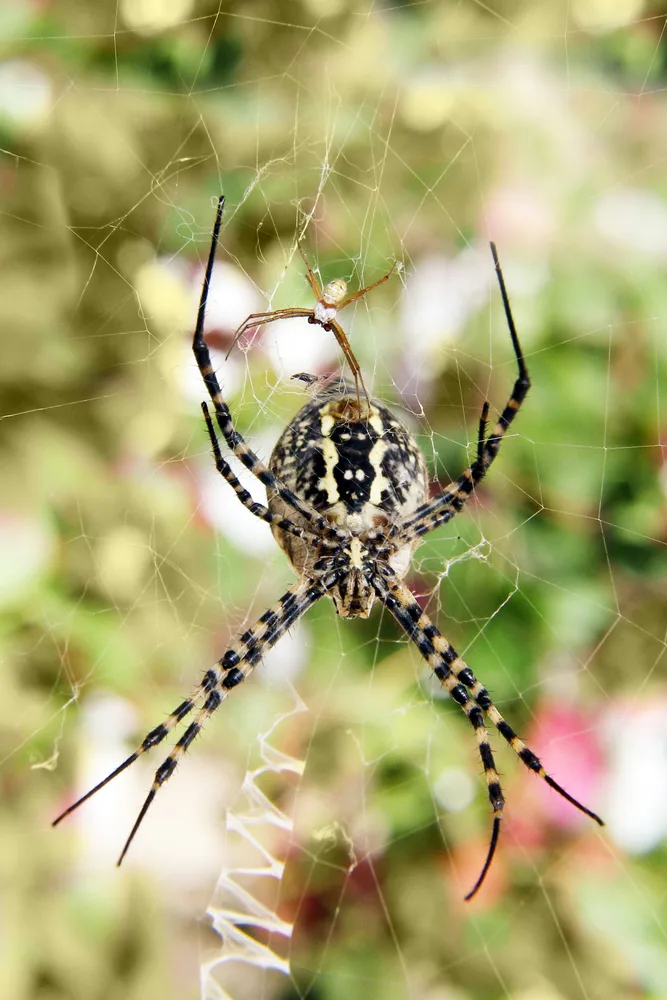
Spiders are one of those creepy-crawlies that can set people on edge, but they have their role in nature and deserve a spot in your garden too.
You might even be surprised to learn that spiders are incredible hunters, I’m looking at you, wolf spider. They’re one of the best beneficial insects you can have in your garden.
Spiders attack and eat nearly all of the pests that we’re trying so hard to keep out of gardens. And while it’s easy to spot the web-weavers, there are other types of spiders who are very rarely seen but are excellent hunters. Spider webs don’t harm the plants they’re on, and these elegant creatures more than earn their keep by the sheer volume of pests that they eat.
While most spiders aren’t dangerous, there are a couple of species whose bites can cause real harm like the brown recluse or the black widow. But the good news is they rarely choose gardens as their preferred habitat.
And no, spiders don’t discriminate and will eat all bugs, including the beneficial ones. However, the benefits of having spiders in your garden far outweigh the cost.
So, the next time you see a hairy-legged spider jump out of your way, resist the urge to smash it into oblivion.
11. Spined Soldier Bugs
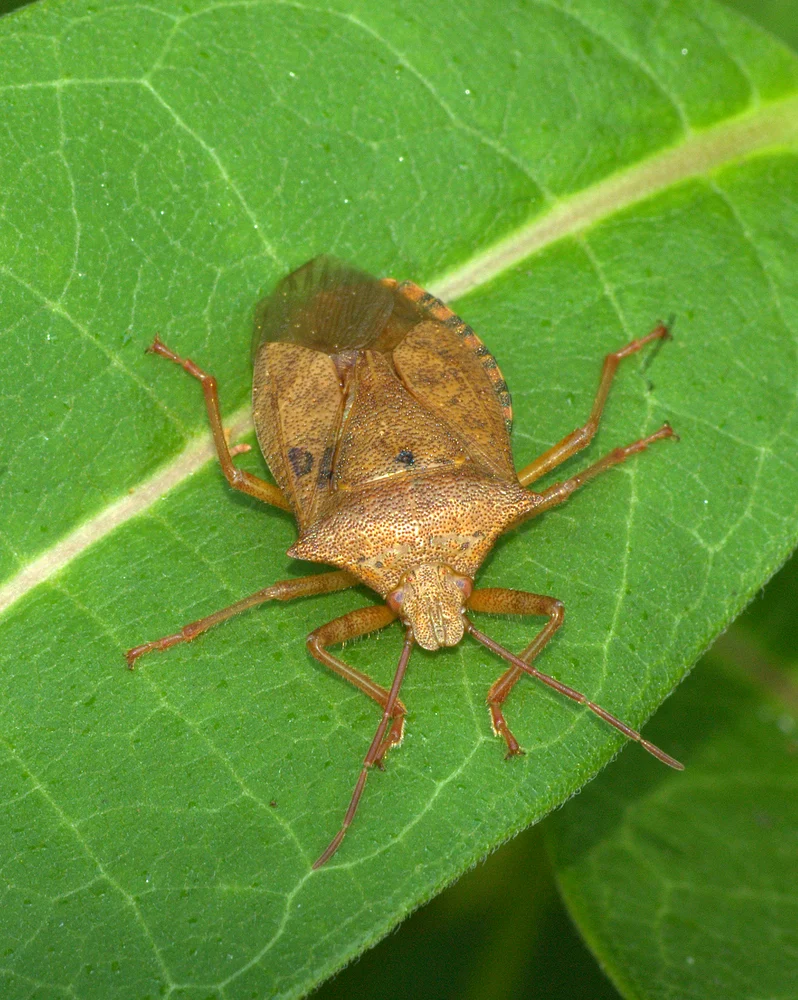
Yet another hungry generalist predator, the spined soldier bug, often gets mistaken for the common Euchistus stink bug, which will feed on your plants. You can identify the spined soldier bug by its sharp spined shoulders and reddish antennae.
The nymphs or instars, as they’re called, are red bodied with a black head and have several black bars on their backs. In their first nymph stage, they won’t eat, but once they pupate into the next successive stages, they eat and eat and eat.
When it comes to generalist predators, these guys take the cake. They will eat just about any insect pest you can think of and will turn cannibalistic if their prey runs out.
They love chowing down on beetle and moth larvae. I’ve seen estimates saying they eat anywhere from 50 – 100 different species of pests, so these bugs earn their keep.
Spined soldier bugs are one of the more popular bugs to buy commercially for pest control. Once released, they spread far and fast, eating the pests that get in their way. You can even purchase pheromones to attract them to your garden.
The spined soldier bug goes out of its way to show us not all stink bugs are created equal.
12. Tachinid Flies
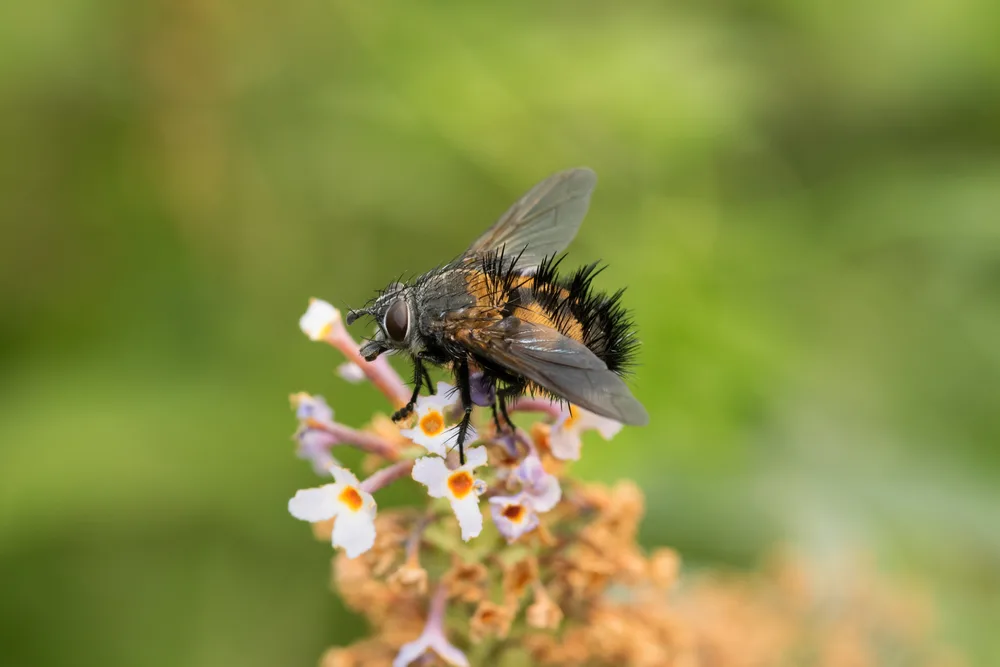
The tachinid fly is somewhat different from all of the other beneficial insects we’ve discussed so far. They’re often mistaken for common house flies. They vary in size, shape, and coloration, and as a gardener, you probably won’t even notice they’re around.
Tachinid flies are another parasitoid, and lucky for us, their hosts are often pests we’re trying to get rid of. Potato beetles, squash bugs, cabbage looper caterpillars, sawfly larvae, grasshoppers, Hornworm caterpillars, and even Japanese beetles make up the list of hosts.
Again, we find the act of reproduction is what kills off the pest-host. Female tachinid flies either lay their eggs outside the body of the host, leaving the maggots to burrow into the host once they hatch or they insert their eggs into the host’s body where they will hatch and consume the host from the inside out. Who knew such atrocities were happening out there in the rows of beans and tomatoes?
They’re another type of beneficial insect that can be attracted to your garden by planting flowers. The adult flies feed on nectar and pollen, so giving the adults access to flowers, ensures devastating results for nearby pests.
Here’s the thing.
The more pesticides we use, the fewer insects we have overall. And with prolific pesticide use, we’re creating more work for ourselves by wiping out our six-legged garden allies.
As you can see, nature has a way of leveling the playing field for us if we just stop bugging the bugs. I hope you’ll give beneficial insect pest control a try.

Get the famous Rural Sprout newsletter delivered to your inbox.
Including Sunday ramblings from our editor, Tracey, as well as “What’s Up Wednesday” our roundup of what’s in season and new article updates and alerts.


